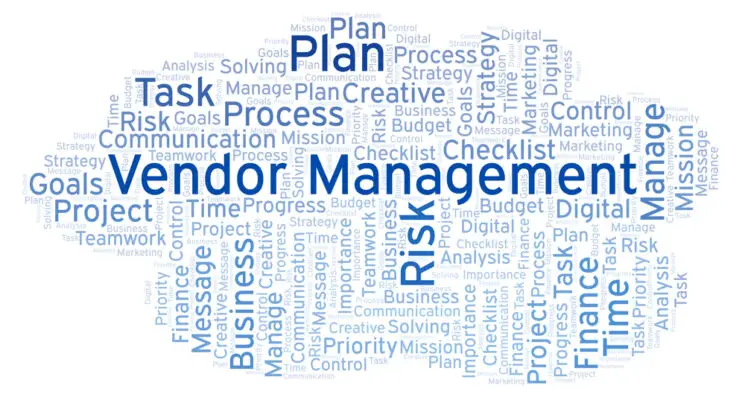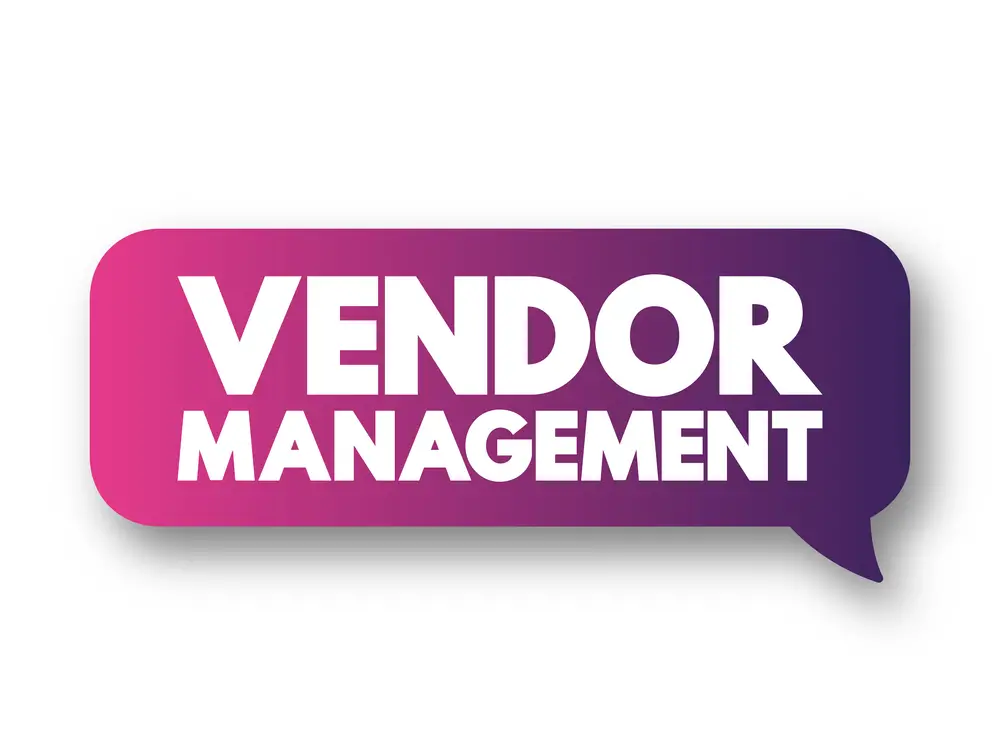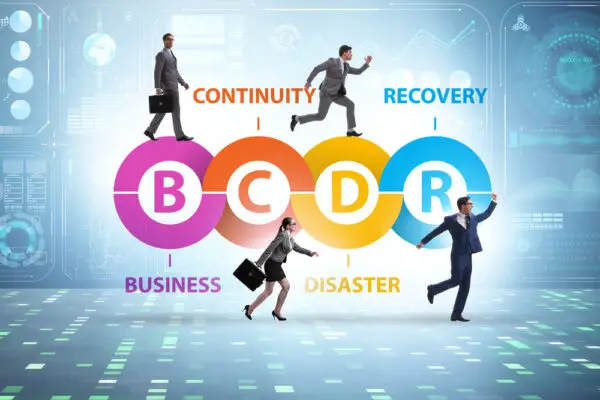As an organization, it’s essential to protect your data against cyber threats. Implementing a vendor risk management program is one of the most effective ways to ensure the security of your sensitive information.
The National Institute of Standards and Technology (NIST) has established a set of standards for developing and maintaining a successful vendor risk management program, known as the NIST Vendor Risk Management framework.
Vendor risk management is an important part of any organization’s cybersecurity strategy. With the increasing reliance on third-party vendors, organizations must ensure that their vendors are secure and compliant with industry standards. The National Institute of Standards and Technology (NIST) has developed a framework to help organizations assess and manage vendor risk.
The NIST Cybersecurity Framework provides organizations with a structured approach for maturing their supply chain risk management practices. It consists of standards, guidelines, and best practices to better understand, manage, and reduce cyber risks associated with third-party vendors.
This includes assessing the security posture of vendors, understanding the potential impact of a breach or attack, and security events and developing strategies to mitigate risks.
Organizations can use the Prevalent Third-Party Risk Management Platform to meet NIST requirements for stronger supply chain and supplier security controls. This platform helps automate the vendor risk assessment process by providing visibility into vendor security controls and compliance status.
It also allows organizations to track changes in vendor compliance and security posture over time so they can quickly identify any issues that may arise.
When assessing their third party security third-party vendors, it is important for organizations to consider not only technical aspects such as encryption protocols but also business operations such as contract terms and customer service policies.
Organizations should also ensure that their vendors are compliant with applicable laws and regulations such as GDPR or HIPAA.
This will help protect against costly data breaches or attacks while also helping organizations maintain compliance with federal government and industry regulations.
In this blog post, we’ll explore what the NIST VRM framework is and how it can help you protect your data from cyber threats.

What is NIST Vendor Risk Management?
The NIST Vendor Risk Management (VRM) framework is designed to help organizations identify, assess, and mitigate risks associated with third-party vendors.
It provides guidance on how to establish and implement a comprehensive vendor risk management process, including guidelines for conducting due diligence reviews, assessing potential risks posed by vendors, and monitoring and remediating any existing risks.
Why is NIST VRM Important?
Vendor risk management is essential for protecting your organization’s sensitive data from malicious actors or lax security practices by third-party vendors. Without proper oversight, even trusted vendors could be exposing your company’s valuable assets to cyber attackers or unauthorized access.
The NIST VRM framework provides guidance on how to evaluate potential third-party partners before engaging in business with them as well as how to monitor existing relationships over time in order to identify any potential security vulnerabilities or other risks that could threaten the integrity of your information systems or networks.
Benefits of Following the Framework
Following the NIST VRM framework can provide numerous benefits for organizations looking to enhance their cybersecurity posture. These include improved visibility into partner activities related to security protocols and practices; better control over vendor access rights; increased confidence in third-party service providers; and enhanced compliance with industry regulations such as GDPR or HIPAA.
Additionally, by implementing a comprehensive vendor risk management system according to the guidelines outlined in the NIST VRM framework, companies can reduce their overall exposure to cyber-attacks while ensuring that their sensitive data remains secure at all times.
Basics of the Framework
NIST’s risk management framework is published under NIST 800-SP. This document discusses the concerns that arise from a lack of knowledge and control of the technology an organization purchases.
A further problem they cannot solve is how a company can develop a software application, or how to own critical infrastructure cybersecurity maintain the integrity, security, or resilience of products or services. This unknown environment creates a high risk that could exploit the attack.
Avoiding Unnecessary Cyber Risk
The National Institute on Standards and Technology’s Cybersecurity Framework is a standardized framework that provides an integrated structure for an organizational structure. The framework provides unified organizational structures for several approaches to improving critical infrastructure cybersecurity along with standards and guidelines and other information.
NIST Compliance Checklist
A cybersecurity framework has been developed for cyber attacks by cybersecurity firms since 2014. It was designed to aid private companies in identifying cyber risks. The CSP is widely believed by organizations across industries as an ideal way of building cybersecurity programs.
It consists of five components, which are organized as follows: identification and protection. Each function is further separated into 23 separate categories and is further divided into cybersecurity outcomes and security control. NIST compliance must be compulsory in all government agencies now. Typical, every week.

A NIST 800-53 Third-Party Risk Compliance Framework
Instead of looking at compliance in terms of each measure of information security, a more efficiently implemented procedure can be streamlined in five main areas. This conformance framework may also include NIS CSF publications in cyber-security and cyber security.
Supply Chain Risk Management Controls in SP 800-53 Rev. 5
Supply of supply chain attacks and privacy controls have improved since the re-writing of SP 800-543. In SP 800-53 Rev. 4 Supply Chain Protective measures were included under the Systems & Service Acquisition Control Group.
The single control addresses the need for the identification of vulnerabilities throughout a system’s lifecycle and for responding by strategy and control. The program also supported companies to acquire or purchase solutions for the implementation of security measures by other organizations.
The statutory requirements require organizations to examine suppliers before they engage to increase their visibility in the supply chain.
Supply Chain Risk Management (SCRM) Controls
Data breaches from third parties should be ignored. The damage resulting from solar wind attacks on US and federal agencies and governments illustrates the devastating potential for unabated third parties.
This incident triggered an extensive review of cybersecurity risk assessments and incident management strategies. The security team restructured their properties to create a new Northstar measurement – improving baselines for cybersecurity across the services offered.
NIST’s structured approach to maturing supply chain risk management processes focuses on helping organizations identify, assess, and mitigate risks that can arise from their supply chain activities.
It is based on the NIST Risk Management Framework (RMF) and provides a proactive approach to understanding and mitigating supply chain risks. The RMF provides a set of recommended
Supply Chain Risk Management Requirements in the Cybersecurity Framework v1.1
The Cybersecurity Framework is another NIST publication that covers third-party cybersecurity risks. This framework uses existing security frameworks, like CIS, COBIT, ISA, ISO/IEC and NIST.
Meeting NIST SP 800-53r5 and NIST 800-161r1 Supply Chain Cybersecurity Guidance Using the Prevalent Platform
Prevalent will assist with a system that can handle the vendor risk assessment process and a vendor risk assessment.
Organization-wide risk management
Implementability of ICT SCRM in an organisation’s risk management system becomes easier when it becomes easier. In implementing risk management strategies, the formula is fairly common. Keep in mind that certain risks cannot be hedged against acts of the gods.
These examples are a rudimentary step-by-step strategy for risk management and should only be interpreted as a summary and not a “how-to”. The ICT SCRM has the same implementation strategy but these incidents are almost always projected onto the supply chain.
Security Assessment and Authorization
You should periodically monitor your security measures. During this review, the control will be tested to determine its effectiveness. Corrections in implementation must take place in the event of failure.
Personnel Security
Your organisation and security teams will have to ensure that those who hold a role or other roles are reliable and comply with established security standards. In addition, it is necessary to protect information systems during the period of termination. Staff who violate policies are given sanctions.
Configuration Management
Any computer system installed in the federal information systems, must include full security controls and no default configuration of any standard configuration.
Incident Response
Organizations must be able to implement policies or plans to respond to incidents, report and monitor. In addition, an emergency management plan (IRP) should provide for information systems and organizations that can identify, analyze, contain and recover critical information systems. It must then be documented and notified by the appropriate authorities.
RSI’s Tips to Third-Party Risk Management
We have talked about Nist third-party risk management framework in detail. A framework for security risk management. But in reality, when dealing with suppliers, you are dealing with people who will most likely determine your risk. We have discussed a number of ways to implement good practices before contacting suppliers, which brings us to tip number 1.
Implement Security Controls in your Organization
Check the security control list in the NIST Special Publications document. Risk Assessment involves identifying which controls the third party requires prior to a transaction. This measure is then used as an aid to the access control policies to reduce risk.
Implementation of frameworks can be difficult but are also responsive to business requirements. Ensure that the security controls are implemented by using the expertise of an expert security specialist.
Implementing security controls in an organization is essential to protecting the company’s data and systems. Security controls help reduce the risk of cyber-attacks, data breaches, and other malicious activities that can be damaging to a business.
It is important to ensure that your organization has the right security measures in place to protect itself from these threats data and resources. These controls should be designed to protect against unauthorized access, malicious activities, and other threats while allowing legitimate user activities.
Conclusion
In following NIST’s guidelines for establishing an effective vendor risk management system, organizations can gain increased visibility into their vendors’ activities while mitigating potential risks posed by outside actors or lax security practices among partners.
Additionally, adhering to this framework ensures that companies remain compliant with relevant industry regulations while reducing their overall exposure to cyber threats.
Implementing an effective VRM program according to the standards established by NIST can help organizations safeguard their valuable assets while enhancing customer trust through improved transparency into partner activities related to physical security, protocols and practices.
Have you read?
Why is vendor risk management important?
Cybersecurity risk management framework
Risk Management plan for cyber and internet project
Dod supply chain risk management plan template
Cyber supply chain risk management plan

Chris Ekai is a Risk Management expert with over 10 years of experience in the field. He has a Master’s(MSc) degree in Risk Management from University of Portsmouth and is a CPA and Finance professional. He currently works as a Content Manager at Risk Publishing, writing about Enterprise Risk Management, Business Continuity Management and Project Management.


